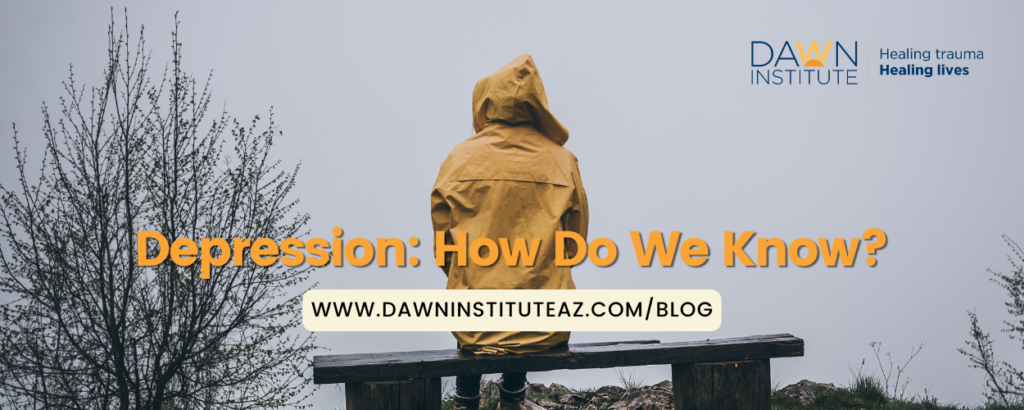Am I just having an off week? Why do things seem overwhelming right now? When was the last time I had a good laugh? Why is everything so hard? When was my last good day? Am I sleeping enough… or too much? These are questions we may all have felt from time to time – especially as we juggle work, children, school, friends, and family. But how do we know these thoughts or feelings are temporary or something more serious? How do we know when it might be depression?
What is Depression?
October is National Depression and Mental Health Screening Month. So, what is depression from a clinical perspective? Major Depressive Disorder (MDD) occurs when a depressed mood occurs most of the day, almost every day (American Psychiatric Association [APA], 2013). These depressive symptoms include (National Institute of Mental Health [NIMH], 2022):
- Sad or anxious mood
- Feelings of hopelessness, irritability, frustration, guilt, and/or worthlessness
- Decreased interest in activities
- Low energy or fatigue
- Struggling to concentrate or make decisions
- Trouble sleeping — either not sleeping enough or oversleeping
- Changes in appetite
- Thoughts of death or suicide
- Aches or pains that do not have a clear physical cause.
The diagnostic criteria for MDD requires five or more of these symptoms occur during a two- week period, and the symptoms must not be related to bereavement, effects of a substance, or another medical condition (APA, 2013). In other words, MDD symptoms affect how one feels, thinks, and completes daily activities (NIMH, 2022). It is important to note that not everyone suffering from MDD will feel all these symptoms – some will feel select symptoms while others will feel many (NIMH, 2022).
Types of Depressive Disorders
MDD, although it is the most common, is not the only type of depressive disorder. The following are other types of depression (NIMH, 2022):
- Persistent Depressive Disorder
Includes less severe symptoms, but lasts two years or more - Perinatal Depression
Major depression during pregnancy or post-partum - Seasonal Affective Disorder
Symptoms change due to the seasons. This happens most often during the late fall and early winter and subsides in spring and summer - Depression with Symptoms of Psychosis
This is a severe form of depression when an individual experiences, as in its name, symptoms of psychosis (e.g. delusions or hallucinations)
What to Do if You or Someone You Love Has Symptoms
A conversation can go a long way. Reach out and talk to your loved ones. You can say, “Hey, I’ve noticed you aren’t as active as usual. Is everything okay?” or “You seem overwhelmed lately. Is there something you’d like to talk about or anything I can do to help?” Sometimes just showing up for someone and offering a listening ear can make all the difference.
If you are concerned you are experiencing depression, contact your primary care provider or a mental health clinician. Additionally, Dawn Institute offers support through community awareness and trainings. Check out our website for more information, or request services today.
References:
American Psychiatric Association (APA). (2013). Diagnostic and statistical manual of mental health disorders (5th ed.). American Psychiatric Association.
National Institute of Mental Health (NIMH). (2022). Depression.
https://www.nimh.nih.gov/health/topics/depression

